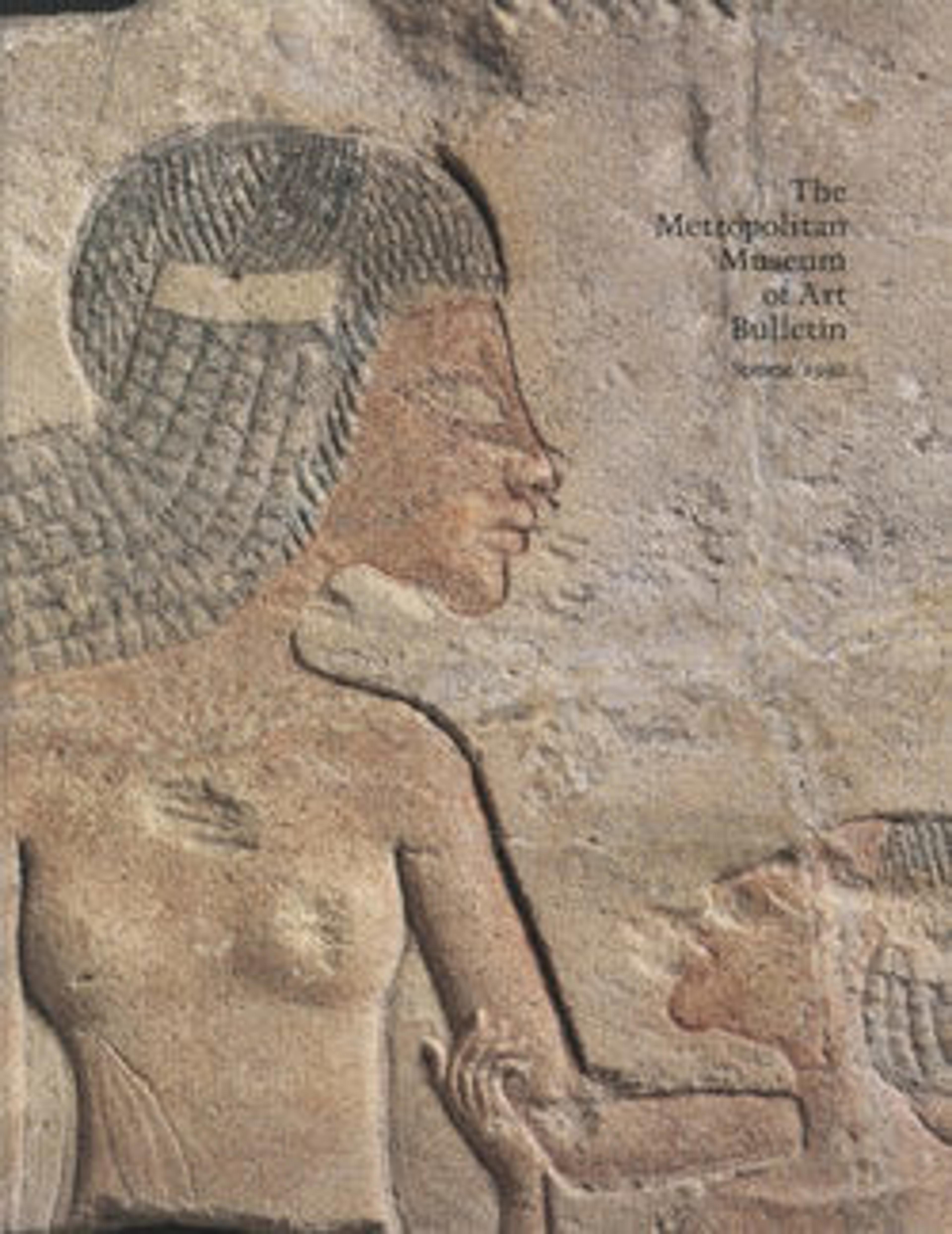Handle, possibly for a spoon
This elaborate silver handle is decorated with the head of a calf at one end and the head of a lion at the other; a third creature, difficult to identify, emerges from the lion’s mouth. The creature’s long snout is split horizontally, and presumably the bowl of a spoon or another implement was originally inserted there,
A silver spoon with a loop handle decorated with the head of a duck was excavated at a palace at Pasargadae, the first capital of the Achaemenid Persian Empire. That spoon was likely used at the royal table, and probably this spoon was as well. There was a long history in Iran of decorating vessels with animal features, and the Achaemenids adopted and expanded this practice.
A silver spoon with a loop handle decorated with the head of a duck was excavated at a palace at Pasargadae, the first capital of the Achaemenid Persian Empire. That spoon was likely used at the royal table, and probably this spoon was as well. There was a long history in Iran of decorating vessels with animal features, and the Achaemenids adopted and expanded this practice.
Artwork Details
- Title:Handle, possibly for a spoon
- Period:Achaemenid
- Date:ca. 5th century BCE
- Geography:Iran (?)
- Culture:Achaemenid
- Medium:Silver
- Dimensions:Length: 3.94 in. (10.00 cm); Height: 1.22 in. (3.10 cm); Width: 0.43 in. (1.10 cm)
- Credit Line:Gift of Norbert Schimmel Trust, 1989
- Object Number:1989.281.31
- Curatorial Department: Ancient West Asian Art
More Artwork
Research Resources
The Met provides unparalleled resources for research and welcomes an international community of students and scholars. The Met's Open Access API is where creators and researchers can connect to the The Met collection. Open Access data and public domain images are available for unrestricted commercial and noncommercial use without permission or fee.
To request images under copyright and other restrictions, please use this Image Request form.
Feedback
We continue to research and examine historical and cultural context for objects in The Met collection. If you have comments or questions about this object record, please contact us using the form below. The Museum looks forward to receiving your comments.
